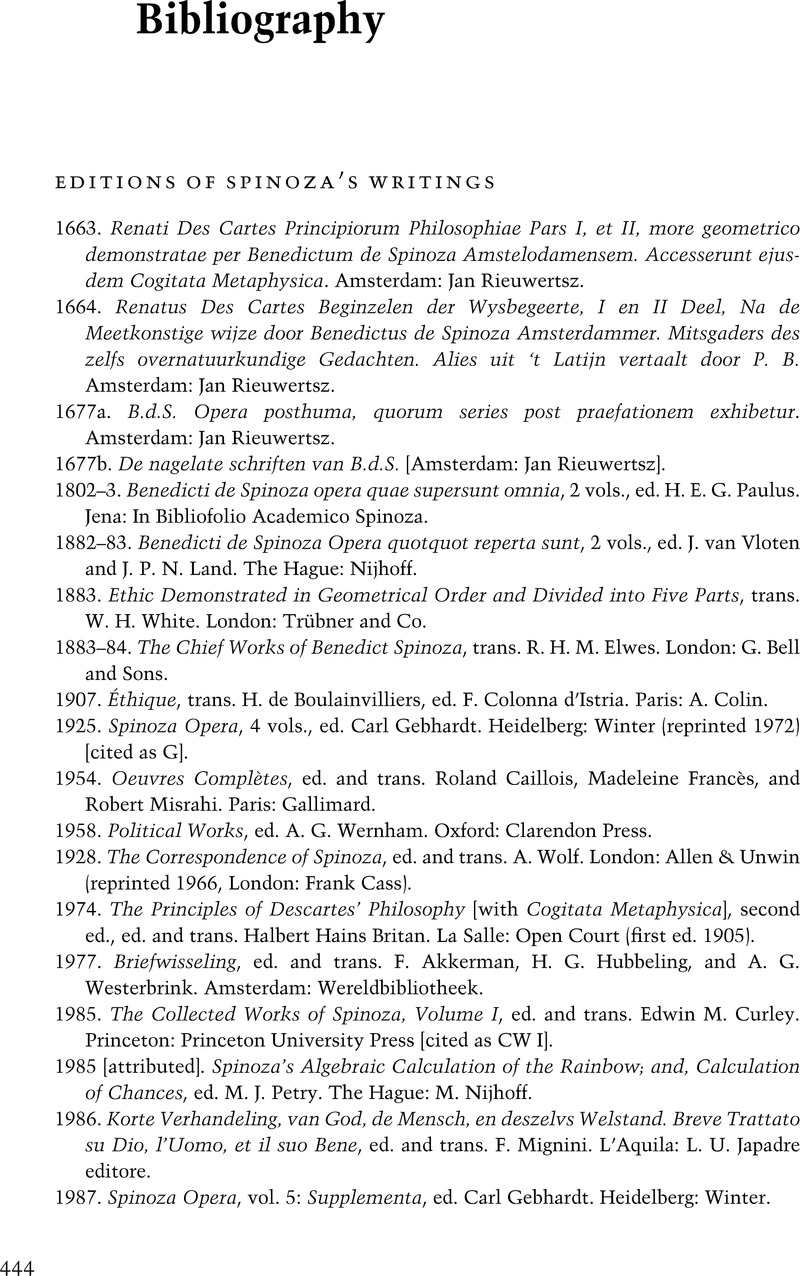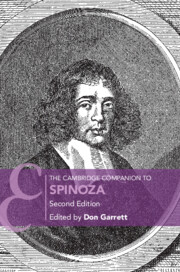Book contents
- The Cambridge Companion to Spinoza
- Other Volumes in the Series of Cambridge Companions
- The Cambridge Companion to Spinoza
- Copyright page
- Contents
- Contributors
- Abbreviations and Method of Citation
- Introduction
- 1 Spinoza’s Life
- 2 Spinoza’s Metaphysics of Substance
- 3 Spinoza on the Metaphysics of Thought and Extension
- 4 Spinoza’s Epistemology
- 5 Spinoza on Natural Science and Methodology
- 6 Spinoza’s Metaphysical Psychology
- 7 Spinoza’s Ethical Theory
- 8 Kissinger, Spinoza, and Genghis Khan
- 9 Spinoza’s Philosophical Religion
- 10 Spinoza’s Contribution to Biblical Scholarship
- 11 Spinoza’s Reception
- Bibliography
- Index
- Other Volumes in the Series of Cambridge Companions
- References
Bibliography
Published online by Cambridge University Press: 14 October 2021
- The Cambridge Companion to Spinoza
- Other Volumes in the Series of Cambridge Companions
- The Cambridge Companion to Spinoza
- Copyright page
- Contents
- Contributors
- Abbreviations and Method of Citation
- Introduction
- 1 Spinoza’s Life
- 2 Spinoza’s Metaphysics of Substance
- 3 Spinoza on the Metaphysics of Thought and Extension
- 4 Spinoza’s Epistemology
- 5 Spinoza on Natural Science and Methodology
- 6 Spinoza’s Metaphysical Psychology
- 7 Spinoza’s Ethical Theory
- 8 Kissinger, Spinoza, and Genghis Khan
- 9 Spinoza’s Philosophical Religion
- 10 Spinoza’s Contribution to Biblical Scholarship
- 11 Spinoza’s Reception
- Bibliography
- Index
- Other Volumes in the Series of Cambridge Companions
- References
Summary

- Type
- Chapter
- Information
- The Cambridge Companion to Spinoza , pp. 444 - 474Publisher: Cambridge University PressPrint publication year: 2021



